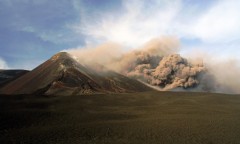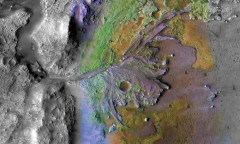By KM Diaz, | March 13, 2017

The Batagaika crater is located in Yana river basin, eastern Siberia. People living near the area tend to stay away from it, but scientists around the world were fascinated by this.
The slump in Siberia also known as the "doorway to the underworld" is considered to be megaslump because it is more than 5 hectares in area. It also tells the ancient climate history.
The Batagaika crater is located in Yana river basin, eastern Siberia. People living near the area tend to stay away from it, but scientists around the world were fascinated by this. The geologists often referred the craters as slumps, if it is more than 5 hectares it is considered as megaslump. The largest of all is the Batagaika crater, exceeds for more than 50 hectares in area and 86m deep.
Like Us on Facebook
The researchers from Germany and Russia are still monitoring how fast the crater expand. But, the research team from the University of Sussex led by Julian Murton have a different approach in studying the crater. They are searching for proofs about the history of climates and the looked of Siberia thousand years ago.
Batagaika crater was formed in the 1960s after some locals cut trees around the area. Trees cover the soil from the summer heat, cutting them down means a high amount of heat will enter the soil, and trees also transpire that makes the soil cooler. By reducing their number, it will make a big impact on the temperature of the soil.
The megaslump started to get wider, about 50 landscapes already collapsed and 60 meters of the original forest disappeared.Terrains have been developed at the bottom of the megaslump. According to some geologists, these terrains were bad land.
Five layers of sediments were also discovered in the megaslump covered with frozen lands, compromised ice, and some wood-rich layers. In terms of climate's history, these layers can take back the past 125,000 years ago understand the climate before; when the climate in Arctic region was warm.
According to Murton, they can even go back up to 200,000 years ago, however, they are uncertain in dating and needs further work on the site. But in their hypothesis, the wood-rich layers represent an ancient forest developed on the site 200,000 years ago, and the sand grains deposited represents windy climate.
-
Use of Coronavirus Pandemic Drones Raises Privacy Concerns: Drones Spread Fear, Local Officials Say

-
Coronavirus Hampers The Delivery Of Lockheed Martin F-35 Stealth Fighters For 2020

-
Instagram Speeds Up Plans to Add Account Memorialization Feature Due to COVID-19 Deaths

-
NASA: Perseverance Plans to Bring 'Mars Rock' to Earth in 2031

-
600 Dead And 3,000 In The Hospital as Iranians Believed Drinking High-Concentrations of Alcohol Can Cure The Coronavirus

-
600 Dead And 3,000 In The Hospital as Iranians Believed Drinking High-Concentrations of Alcohol Can Cure The Coronavirus

-
COVID-19: Doctors, Nurses Use Virtual Reality to Learn New Skills in Treating Coronavirus Patients












